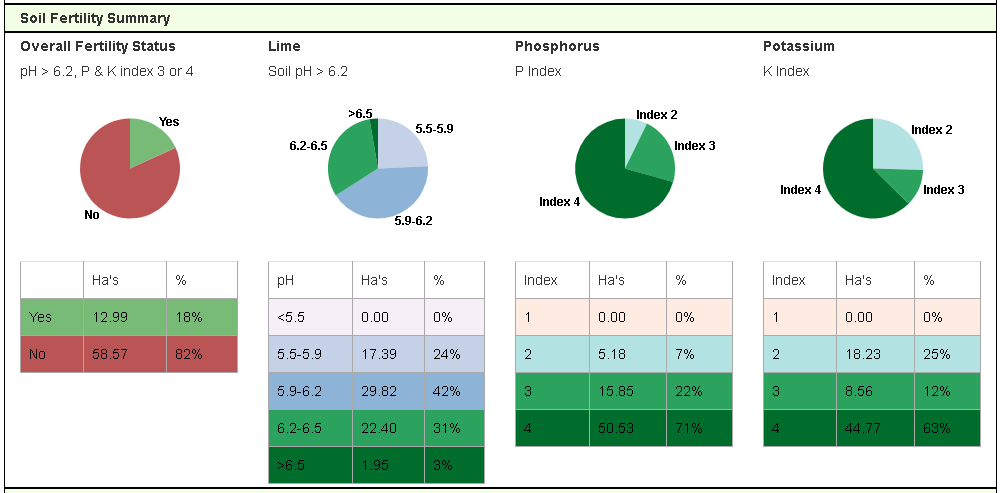Soil Fertility
John took soil samples on his farm last year through the Signpost programme and these are now guiding his nutrient application decisions. His NMP was updated for 2023 so that he can plan his chemical and organic fertiliser applications based on each field’s soil fertility and cropping decisions.
Slurry sample results were taken on the farm and came back with the following results:
- Sample 1 (outdoor tank for spring cows): 12.8 units N, 7.54 units P, 22 units K at 7.86% dry matter
- Sample 2 (indoor tank for autumn cows): 13.6 units N, 10.8 units P, 42.3 units K at 9.66% dry matter
John will be spreading slurry on his silage ground at a rate of 2,500 gallons/acre using the dribble bar. His silage crop requirements are 80 units N, 16 units P and 100 units K, without allowing for any build-up of soil indexes.
Spreading the better quality slurry from the autumn cows’ tank means that he will apply 34 units N, 27 units P and 106 units K which is more than enough to meet the first cut silage requirements. It can be then topped up with one bag of 46% protected urea per acre, or 46 units of a protected urea plus sulphur fertiliser.
The soil fertility on the farm is quite good overall with 93% of the farm in index 3 or higher for phosphorus and 75% of the farm in index 3 or higher for potassium. The biggest area for improvement is in the soil pH where 66% of the farm is less than the target pH of 6.2. Last year John spread over 70t of lime to help correct this. A further 140t will be required this year and in 2024 to help rise the soil pH to its optimum.
Research shows that liming acidic soils increases grass production by 1.0t DM/ha. An application of 5t/ha of ground limestone to correct soil pH represents a cost of €25/ha/year over 5 years. The return on investment from lime gives €4-€7 worth extra grass for every €1 invested in lime, which is financially beneficial to John.
When spreading lime, John follows these guidelines:
– Spread on grass covers <800 kg DM/ha.
– Do not spread more than 3t/acre in a 2 year period.
– Avoid cutting silage for 3-6 months on paddocks that have been limed.
– To minimise N losses from slurry (up to 50%) and urea, apply cattle slurry first and then apply the lime 7 to 10 days later.



